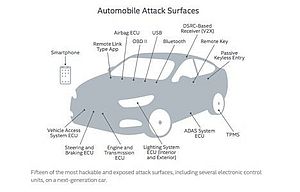Futurism Technologies. What if a manufacturing business could leverage advanced analytics to forecast events pertaining to equipment breakdowns before they actually happen, use real-time and actionable insights to drive production and manage inventory, and help decision makers take right decisions at the right time? Industrial Internet of Things aka IIoT is driving such capabilities facilitating unmatched operational efficiencies and production performance like never before for the manufacturing sector.
Good news is that manufacturing businesses across the world are embracing the idea of IIoT and the growing need to embrace it. In addition, with the mounting challenges of digital disruption and the pressure to keep up with global competition, more number of manufacturers are turning to IIoT as the keystone of their digital transformation (DX) initiatives.
Did you know?
Manufacturing industry is expected to be the largest sector for Industrial IoT platforms as more and more companies realize the pros of connecting industrial equipment and machinery to streamline their operations and tame costs.
Since we are the cusp of the Fourth Industrial Revolution wave aka Industry 4.0, wherein businesses are realigning their digital investments and priorities, organizations ought to speed up with their digital transformation plans.
This is the reason digitization has become a top priority for manufacturing businesses worldwide to survive and thrive in a post-pandemic and competitive world. And what better way to kickstart your digital transformation journey than IIoT to creating a smart factory or connected factory.
Here are top five reasons manufacturing businesses need to embrace IIoT to stay ahead of the curve:
1. Mobility
IIoT mobile solutions help a manufacturing organization to improve its production efficiency and maintenance activities, as a part of its Industry 4.0 digital transition strategy. IIoT mobile solutions are aimed at mobile workforce within the production and maintenance sphere. With IIoT, you will always have access to work orders from anywhere in the plant or unit and be able to manage or track spare parts from the warehouse or from the shop floor. Mobility within manufacturing and asset management helps to create workforce flexibility and facilitates tactical abilities for addressing issues pertaining to efficiency, productivity, etc. Further, uninterrupted and on-demand access to system information leads to improved efficiency.
Key benefits include:
• Timely alerts to the engineering team/department directly via smartphones or wearables (smartwatches) when critical events occur in production line, supply chain, logistics, inventory, etc.
• Assisting field service experts/technicians on the run
• Ability to perform routine maintenance and material management activities on the go
• Quick and easy access to documentation
• Easy and quick access to SOPs, technical documentation, work instructions, etc. as and when needed.
2. Remote monitoring
IIoT empowers a manufacturing business to supervise, diagnose as well as solve issues for connected machineries and equipment remotely. Manufacturing businesses are utilizing IoT assets to connect systems and machines together, which is a paradigm shift enabling real-time asset monitoring capabilities. Connected assets offer the opportunity to monitor them for reliability, performance, safety and compliance in real-time and on the go. Asset monitoring is a boon in remote manufacturing businesses where sensors help to track production operations and send status/alerts or reports to the right personnel. It also provides a platform to control and manage assets for improved operation and production facilitating timely and proactive manufacturing decisions.
Connected machines and equipment can be easily diagnosed to check and identify potential issues. Remote monitoring includes tracking anything from usage and performance of a machinery/equipment to capturing alerts, tracking performance history, etc. Simply put, technicians can perform preliminary diagnostics from a remote location and recommend corrective measures. Efficient asset tracking in manufacturing leads to seamless status monitoring of key machineries and equipment as well as final products, to prevent quality issues and improve supply chain operations.
3. Aftersales
As IIoT enables a manufacturing business to diagnose and monitor connected equipment remotely, it is of great help when it comes to aftersales.
For an equipment manufacturer, aftersales means profit and revenue. This is where most of the manufacturing businesses fail, as they heavily rely on old school aftersales delivery models, which are not only inefficient, but are also costly.
In a traditional old-school aftersales delivery model, service technicians are required to hop between multiple site locations i.e. from the installation site to the manufacturing units and the other way around. On the other hand, connected equipment not only drives efficiency, but also eases the aftersales service model. Yes, the technicians can simply diagnose issues remotely and can then reach the installation location or site armed with the required tools to repair the same. This is how IIoT is speeding up the service delivery for a huge number of equipment manufacturers across the world.
4. Predictive Maintenance
According to the US Department of Energy, having a reliable predictive maintenance model in place can help a manufacturing business achieve 70% reduction in breakdowns, tenfold increase in ROI, 25%-30% reduction in maintenance costs and 35%-45% reduction in downtime.
For any manufacturing business, unplanned downtime can cost hundreds and thousands of dollars per hour. If the machinery breaks down unexpectedly, the manufacturing organization incurs a plethora of costs related to recovery and repair. In addition, there are costs pertaining to the disruption in production and supply chain. Having a predictive maintenance model in place can save the day here. According to a study by Accenture, IIoT could help cut equipment breakdowns by up to 70%.
IIoT can help technicians and experts perform proactive analysis for predictive intelligence. For example, if an equipment monitors a temperature range that is exceeding the required maximum limit, an alarm would go off. Now in a traditional setting, an operator would respond to such an alarm. Nevertheless, intelligent analytics derived through predictive maintenance model in an IIoT network would make it easy to foresee and prevent such events well ahead of time. Since unscheduled downtime consumes a good amount of a manufacturing organization’s production costs as well as time, having a predictive maintenance model becomes evident.
5. Connected Intelligence
By connecting equipment and machines, manufacturing businesses create an intelligent network of connected devices that coordinate and communicate with each other autonomously with little human intervention. With such use cases, businesses can collect as well as contextualize data coming from remote manufacturing equipment/assets and systems into intelligent and actionable applications. This helps to provide proactive insights into KPIs thus, helping in faster diagnosis. In addition, manufacturers can now choose to connect to different data centers and unify them all to facilitate real-time data visibility across diverse manufacturing systems and units.
IIoT enabled equipment thus facilitates connected intelligence, which transmits actionable and real-time insights to all the manufacturing stakeholders allowing them to manage units and assets efficiently on the run from anywhere.
Cyber Security
By 2025, the number of connected devices and equipment is expected to surpass 25 billion. From smart factories to smart cities and smart homes to smart workplaces, IoT is reinventing the way we live and perform daily business. This is why manufacturing businesses cannot afford to ignore IoT security. Yes, security ought to be a top priority when it comes to a connected or smart factory.
Mobile devices, connected equipment, sensors, devices, etc. increase the need for cybersecurity. A smart factory powered by IIoT demands for better and round the clock visibility, security and control over all its endpoints including the sensors, applications, mobile devices, IoT devices, wearables, etc.
Takeaway
IIoT has the ability to reimagine a manufacturing business as we see it today. As evolving industry dynamics and cutthroat global competition continue to push manufacturing businesses to reimagine their operations, data-driven and smart manufacturing models powered by the Industrial Internet of Things becomes quintessential.
Last but not the least, for a manufacturing organization to win at IIoT, it is advisable to kick off its digital transition plan with a phased roadmap with smaller projects and goals before building on a comprehensive IIoT network. This would help in optimum ROI and long-term success. Fact is that, more data will be created from connected equipment and systems and thus, the scope of actionable insights a manufacturing business can derive from IIoT is limitless.


























